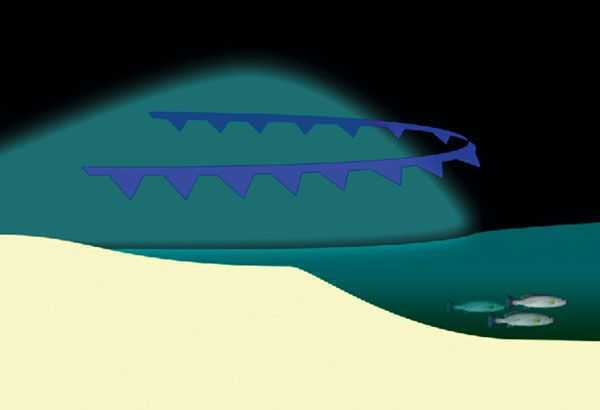
It was one of those gorgeous February days some two decades ago; clear blue skies, calm, and a sunrise that made the horizon glow fire red; the sun seemed to catch up with the stars for a brief moment. The morning was cool but I knew the day would warm. About 10 a.m., the north wind began to pick up to a gentle breeze. It was beautiful day… I didn’t catch squat that day. We’ve all been there; some days are what I call ‘fisherman’ weather days. Meteorologically, what are the days that are best for catching fish?
To have a conversation about meteorological conditions and fishing, let’s first understand a little more about winter / spring weather systems. Without getting too detailed, let’s take a look at cold fronts, wind direction, barometer, and warming trends. A cold front is the leading edge of a cold, dense, air mass. Cyclonic weather systems of the northern hemisphere will typically trigger the movement of these large, cold, dense air masses that move swiftly in a generally southern direction. We experience the cold fronts as that first gust of cold air forcefully blowing from the northwest or north. Strong winds above 15 mph, with gusts to sometimes 40 mph. This is the leading edge of the cold air mass, and the wind speed is caused by the pressure difference from high barometric pressure to a lower barometric pressure. The leading edge of the mass has the most wind speed because there is a bigger difference between higher and lower pressure along this edge. The wind blows from high pressure to low pressure, hence in the northern hemisphere, under these conditions the wind will blow from north to south.
As we’ve mentioned above, the barometric pressure is higher in the cold dense air mass. When the leading edge passes, not only does the wind direction and speed increase, the barometric pressure will increase. This does affect fishing in numerous ways. First, since this dense air mass is heavier than the typical barometric pressure, it can impart a downward pressure on the water and force water out of a bay system. Additionally, the strong north winds for most bays will cause a wind driven current that forces water out of the bays. That is why many of the conversations during the winter have been about extreme low tides. This drop in tide height will move fish around the bays a bit. It will certainly move fish off the flats and into the depths of bays and deeper channels, bayous, rivers, and creeks. Additionally, there is significant evidence that while the drop in pressure may or may not ‘affect’ the fish, the increased surface turbulence from the increased wind will also cause fish to move deeper for comfort. Fish are like us in that respect. Given the choice of a horribly bumpy back road or the interstate, which would you prefer? Accordingly, with the passage of a cold front, speckled trout will not be where we typically expect to find them. Trout find refuge in deeper water during high winds. The higher the wind, the deeper depths they’ll seek. Plus they’ll benefit from the temperature refuge during this scenario.
Your question could be ‘when do they return to where I know I’ve found them in the past?’ For this let’s look at how the pressure changes after the front has passed. During the passage of the leading edge the pressure is increasing to somewhere between 1028 and 1032 millibars Hg (mercury). The pressure will remain high in that range for two to three days before slowly beginning to drop. The second day on the water after a cold front is usually light to calm winds in the morning with consistent, moderate, north winds increasing from approximately 9 to 10 a.m. lasting till sunset. The third day, the dome of the air mass is basically residing somewhat directly overhead and it tends to be calm light and variable winds all day (this is that ‘Fisherman Day’). During this day the pressure is still high but not changing, and your location is now far from the edge of that air mass that caused the wind increase. This third day with low tides and calm winds can be good for redfish if you can find them on shallow bowl shaped bay bottoms that have concentrated them. But it’s not typically a great day for speckled trout. Next month we’ll talk more about the change in terms of speckled trout fishing.
[easy-social-share]